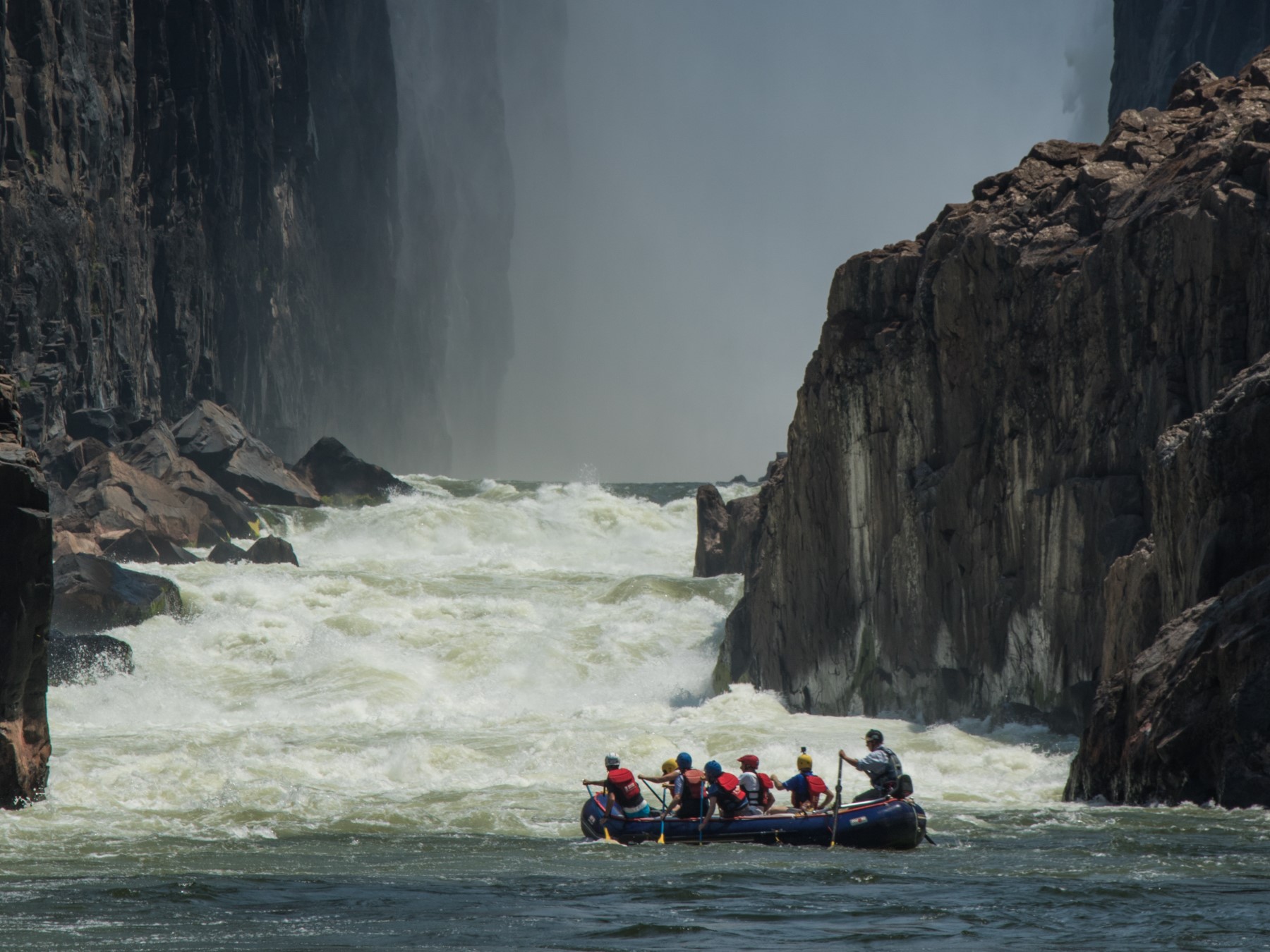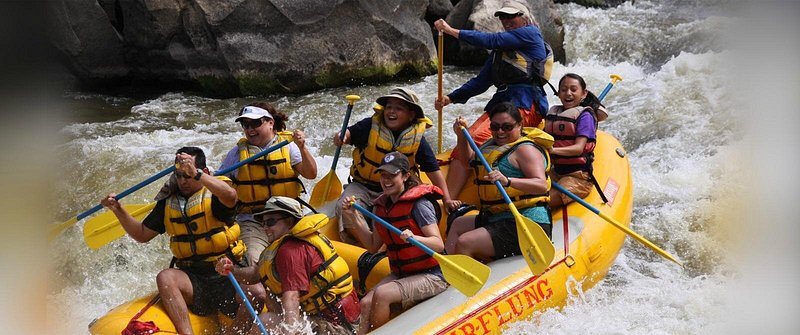White Water Rafting Colorado: A Must-Do Journey!
White Water Rafting Colorado: A Must-Do Journey!
Blog Article
Essential Skills for Water Rafting
Grasping the art of water rafting calls for a combination of precise skills and knowledge to browse the unforeseeable currents of rivers, making it a thrilling yet possibly unsafe activity. As enthusiasts tailor up to get started on their following experience, it is important to furnish oneself with important expertises that exceed simply paddling. From understanding the intricacies of river characteristics to swiftwater rescue techniques and seamless group interaction, the trip down the river requires a blend of experience and versatility. With safety procedures working as a keystone, participants are faced with a diverse difficulty that requires a meticulous approach and steadfast focus.
Paddling Strategies
Understanding efficient paddling strategies is important for navigating water plethoras securely and properly. One basic method is the forward stroke, where paddlers dip the blade completely into the water and pull it back together with the raft to produce propulsion.
Apart from the forward stroke, the draw stroke is necessary for making fast changes or pulling the raft better to an item. By positioning the paddle blade vertical to the water's surface area and drawing the water towards the boating, paddlers can properly alter the vessel's instructions. The backstroke serves as a valuable device for backing up or reducing down the plethora when required.
River Reviewing
Effective paddling methods, such as the forward stroke and attract stroke, play a vital duty in interpreting and browsing river currents, an ability recognized as river reading. River reading includes the capability to evaluate the speed, depth, and direction of the water circulation to make enlightened choices while browsing rapids. By understanding just how the water walks around barriers and with different networks, rafters can pick the most effective route to safely go across the river.
One key aspect of river reading is acknowledging different sorts of currents, consisting of waves, hydraulics, and eddies, and recognizing how they can influence the plethora. Eddies, for instance, are locations where the water moves in a round movement, typically providing opportunities for remainder or tactical maneuvers. Waves can suggest the visibility of barriers or rocks, needing quick changes in paddling method. Hydraulics, typically referred to as "openings," are areas where water recirculates back upstream, posturing potential threats to boatings.
Understanding the skill of river analysis is crucial for pleasurable and secure rafting experiences, making it possible for paddlers to browse difficult waters with self-confidence and precision.

Swiftwater Rescue
Comprehending swiftwater rescue methods is crucial for water rafting enthusiasts to respond successfully in emergency situation circumstances on fast-flowing rivers. Swiftwater rescue involves a set of specialized skills and expertise targeted at securely extracting individuals from swift-moving water. One crucial facet of swiftwater rescue is identifying the risks present in fast-flowing rivers, such as strainers, undercut rocks, and solid currents, to prepare and perform successful rescue procedures.
Appropriate equipment is necessary for swiftwater rescue, including throw bags, rescue link ropes, helmets, and personal flotation protection devices. Rafting enthusiasts have to be experienced at utilizing this equipment in high-stress circumstances to guarantee the safety and security of themselves and others. In addition, swiftwater rescue techniques usually involve synergy and coordination amongst rafters to carry out complicated rescue maneuvers efficiently.
Training in swiftwater rescue is highly suggested for individuals participating in water rafting tasks, as it furnishes them with the needed skills to take care of emergencies quickly and efficiently. White Water Rafting Colorado. By exercising and understanding swiftwater rescue techniques, water rafting fanatics can boost their safety and security which of their fellow rafters on tough river explorations
Group Interaction
Reliable team effort in water rafting relies greatly on seamless interaction among employee to make certain coordinated and risk-free navigation via tough river conditions. Clear and concise communication is vital for the success of any rafting expedition. Staff member should be able to efficiently share crucial info such as paddling commands, warning signals, and navigational instructions.
In the busy and usually unforeseeable atmosphere of river rafting, exact and prompt my link communication can indicate the difference between a possible disaster and a successful run - White Water Rafting Colorado. Each group member plays a crucial role in the overall interaction procedure, whether it be paying attention diligently to the guide's instructions, passing on information to other hop over to these guys paddlers, or signaling for support when needed
Developing an usual language and interaction system before hitting the water is important. This makes certain that every person is on the very same page and recognizes just how to connect properly during the rafting journey. By fostering a culture of open communication and mutual regard, rafting groups can boost their efficiency and safety on the river.

Safety And Security Protocols
In the context of water rafting, the foundation of group communication developed throughout expeditions is additional enhanced with rigorous adherence to safety procedures. Security protocols are extremely important in ensuring the health of both rafters and overviews throughout water rafting expeditions. One vital security procedure is the appropriate wearing of individual flotation protection tools (PFDs) by every person on the boating. PFDs are essential in emergency situations to maintain individuals afloat and provide buoyancy. Additionally, rafters need to be well-versed in swiftwater rescue strategies and methods in instance of someone falling too far or if the plethora capsizes.
An additional key safety procedure is the extensive rundown offered by guides before getting started on a rafting journey. By purely sticking to these safety and security procedures, water rafting trips can be both safe and thrilling for all participants involved.
Verdict
Finally, understanding necessary abilities for water rafting is important for a risk-free and delightful experience on the river. Paddling methods, river analysis, swiftwater rescue, team interaction, and safety and security procedures are all essential elements that add to a successful rafting trip. By honing these skills, rafters can browse challenging waters with self-confidence and make certain the security of themselves and their staff member.
Mastering the art of water rafting needs a combination of exact skills and understanding to browse the unpredictable currents of rivers, making it a thrilling yet possibly unsafe activity. By putting the paddle blade vertical to the water's surface area and drawing the water towards the raft, paddlers can efficiently transform the vessel's instructions.Recognizing swiftwater rescue strategies is important for water rafting enthusiasts to respond successfully in emergency circumstances on fast-flowing rivers.Reliable synergy in water rafting relies greatly on smooth interaction among group members to make sure collaborated and secure navigation via tough river problems.In final thought, understanding important skills for water rafting is crucial for a delightful and risk-free experience on the river.
Report this page